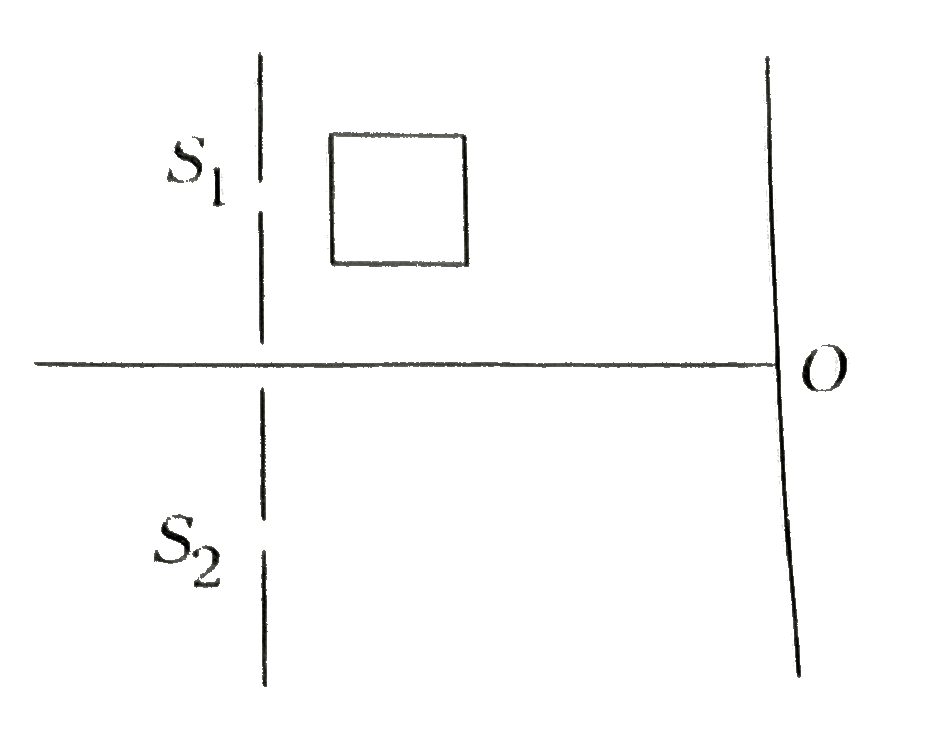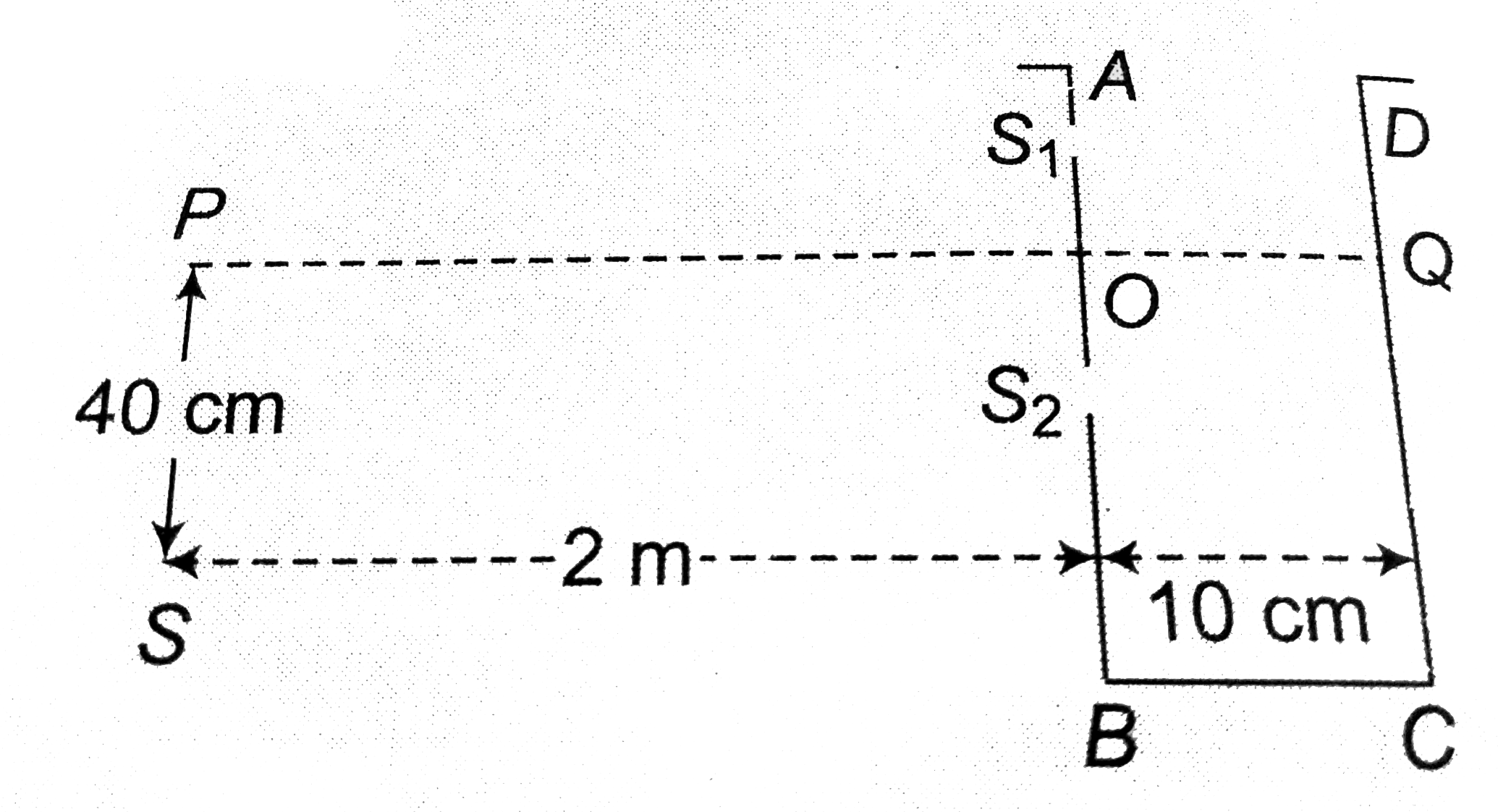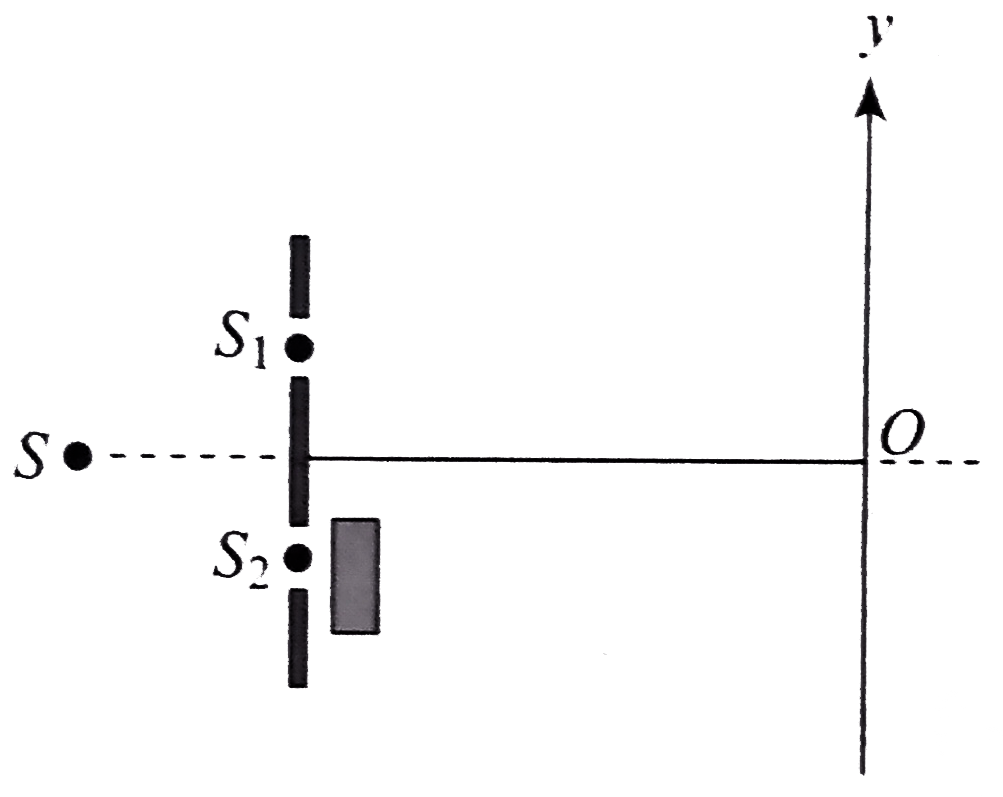Assertion:- In standard YDSE set up with visible light, the position on screen where phase difference is zero appears bright.
Reason:- In YDSE set up magnitude of electromagnetic field at central bright frings is not varying with time.
If both Assertion & Reason are True & the Reason is a correct explanation of the Assertion.
If both Assertion & Reason are True but Reason is not a correct explanation of the Assertion.
If Assertion is True but the Reason is False.
If both Assertion & Reason are False.
The correct Answer is:C
To solve the given question, we need to analyze both the assertion and the reason provided in the context of Young's Double Slit Experiment (YDSE).
1. Understanding the Assertion:
- The assertion states that in a standard YDSE setup with visible light, the position on the screen where the phase difference is zero appears bright.
- In YDSE, constructive interference occurs when the path difference between the two waves arriving at a point on the screen is an integer multiple of the wavelength (nλ, where n = 0, 1, 2,...). At the center of the screen (where the path difference is zero), the phase difference is also zero, leading to maximum intensity and a bright fringe.
Hint: Recall the condition for constructive interference in YDSE.
2. Understanding the Reason:
- The reason states that in the YDSE setup, the magnitude of the electromagnetic field at the central bright fringe is not varying with time.
- The electric and magnetic fields of the light waves at the central bright fringe are indeed in phase and add constructively. The resultant electric field remains constant in magnitude at this point, leading to a stable intensity.
Hint: Consider how the electric and magnetic fields behave at points of constructive interference.
3. Evaluating the Truth of the Statements:
- Both the assertion and the reason are true statements. The assertion correctly describes the condition for a bright fringe, and the reason correctly describes the behavior of the electromagnetic field at the central bright fringe.
- However, the reason does not directly explain why the assertion is true. The assertion is about the appearance of the bright fringe due to phase difference, while the reason discusses the stability of the electromagnetic field.
Hint: Analyze whether the reason logically supports the assertion.
4. Conclusion:
- Since both the assertion and the reason are true, but the reason does not provide a correct explanation for the assertion, the correct answer is that both statements are true, but the reason is not the correct explanation for the assertion.
Final Answer:
Both the assertion and the reason are true, but the reason is not the correct explanation for the assertion.
- The assertion states that in a standard YDSE setup with visible light, the position on the screen where the phase difference is zero appears bright.
- In YDSE, constructive interference occurs when the path difference between the two waves arriving at a point on the screen is an integer multiple of the wavelength (nλ, where n = 0, 1, 2,...). At the center of the screen (where the path difference is zero), the phase difference is also zero, leading to maximum intensity and a bright fringe.
- The reason states that in the YDSE setup, the magnitude of the electromagnetic field at the central bright fringe is not varying with time.
- The electric and magnetic fields of the light waves at the central bright fringe are indeed in phase and add constructively. The resultant electric field remains constant in magnitude at this point, leading to a stable intensity.
- Both the assertion and the reason are true statements. The assertion correctly describes the condition for a bright fringe, and the reason correctly describes the behavior of the electromagnetic field at the central bright fringe.
- However, the reason does not directly explain why the assertion is true. The assertion is about the appearance of the bright fringe due to phase difference, while the reason discusses the stability of the electromagnetic field.
- Since both the assertion and the reason are true, but the reason does not provide a correct explanation for the assertion, the correct answer is that both statements are true, but the reason is not the correct explanation for the assertion.
Both the assertion and the reason are true, but the reason is not the correct explanation for the assertion.
Topper's Solved these Questions
- TEST PAPERSBOOK - ALLENCHAPTER - TEST PAPERSEXERCISE - PAPER 3
99 Videos
- TEST PAPERSBOOK - ALLENCHAPTER - TEST PAPERSEXERCISE - Part-1 Physics
15 Videos
- TEST PAPERSBOOK - ALLENCHAPTER - TEST PAPERSEXERCISE - MATHS
14 Videos
- TEST PAPER 4BOOK - ALLENCHAPTER - TEST PAPER 4EXERCISE - PHYSICS
44 Videos
- UNIT & DIMENSIONS, BASIC MATHS AND VECTOR BOOK - ALLENCHAPTER - UNIT & DIMENSIONS, BASIC MATHS AND VECTOR EXERCISE - Exercise (J-A)
7 Videos
Similar Questions
Assertion : In YDSE bright and dark fringe are equally spaced.
Reason : It only depends upon phase difference.
View SolutionAssertion In the YDSE set up shown in figure a glass slab is inserted in front of the slit S1 as shown in figure Then zero order maxima (where path difference =0) will lie above point O.
Reason Glass slab will produce an extra path difference in the path of the ray passing through S1

View SolutionIn a standard YDSE slit width is 1mm and distance of screen from the slit is 1m. If wavelength of light is 632nm and bright fringe formed at y = 1.270 mm. Find path difference for the point
View SolutionA vessel ABCD of 10cm width has two small slits S1 and S2 sealed with idebtical glass plates of equal thickness. The distance between the slits is 0.8mm. POQ is the line perpendicular to the plane AB and passing through O, the middle point of S1 and S2. A monochromatic light source is kept at S,40cm below P and 2m from the vessel, to illuminate the slits as shown in the figure. Calculate the position of the central bright fringe on the other wall CD with respect of the line OQ. Now, a liquid is poured into the vessel and filled up to OQ. The central bright fringe is fiund to be at Q. Calculate the refractive index of the liquid.

View SolutionAssertion (A) : In YDSE, as shown in figure, central bright frings is formed at O If a liquid is filled between plane of slits and screen the central bright fringes is shifted in upward direction.
Reasoning (R ) : Path difference at O will increase, so y-coordinate will increase.

View SolutionA beam of light consisting of wavelengths 6000 Å and 4500 Å is used in a YDSE with D = 1 m and d = 1 mm. Find the least distance from the central maxima, where bright fringes due to the two wavelengths coincide.
View SolutionStatement-1: In YDSE, if initial phase difference between waves is π, central maxima will be occupied by minima.
Statement-2: In YDSE , if incident light is white light, then central fringe is white while all other fringes are coloured.
Statement-3 : A thic transparent liquid film floating upon water, when illuminated by while light, appears coloured.
View SolutionAssertion: The pattern and position of fringes always remain same even after the introduction of transparent medium in a path of one of the slit.
Reason: The central fringe is bright or dark is depend upon the initial phase difference between the two coherence sources.
View SolutionA YDSE is performed in a medium of refractive index 4/3, A light of 600 nm wavelength is falling on the slits having 0.45 nm separation . The lower slit S2 is covered b a thin glass plate of thickness 10.4 mm and refractive index 1.5. The interference pattern is observed on a screen placed 1.5 m from the slits as shown in figure. (All the wavelengths in this problem are for the given medium of refractive index 4/3, ignore absorption.)

The location of the central maximum (bright fringe with zero path difference) on the y-axis will be
View SolutionA double slit interference pattern is produced on a screen, as shown in the figure, using momochromatic light of wavelength 500 nm. Point P is the location of the central bright fringe, that is produced when light waves arrive in phase without any path difference. A choice of the three strips A, B and C of transparent materials with different thickness and refractive indices is available, as shown in the table. These are placed over one or both of the slits, singularly or in conjunction causing the interference pattern to be shifted across the screen from the original pattern. In the Column - I, how the strips have been placed, is mentioned whereas in the Column-II, order of the fringe at point P on the screen that will be produced due to the placement of the strip(s), is shown. Correctly match both the column.

View Solution
